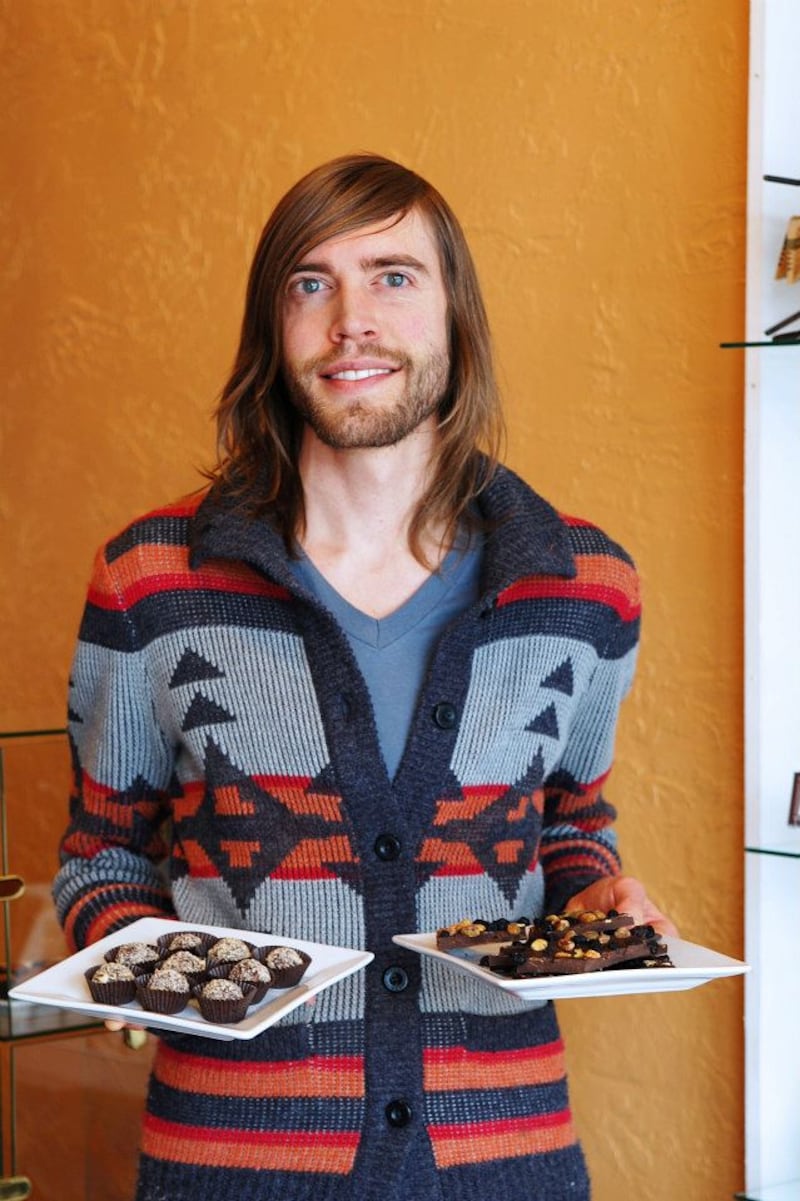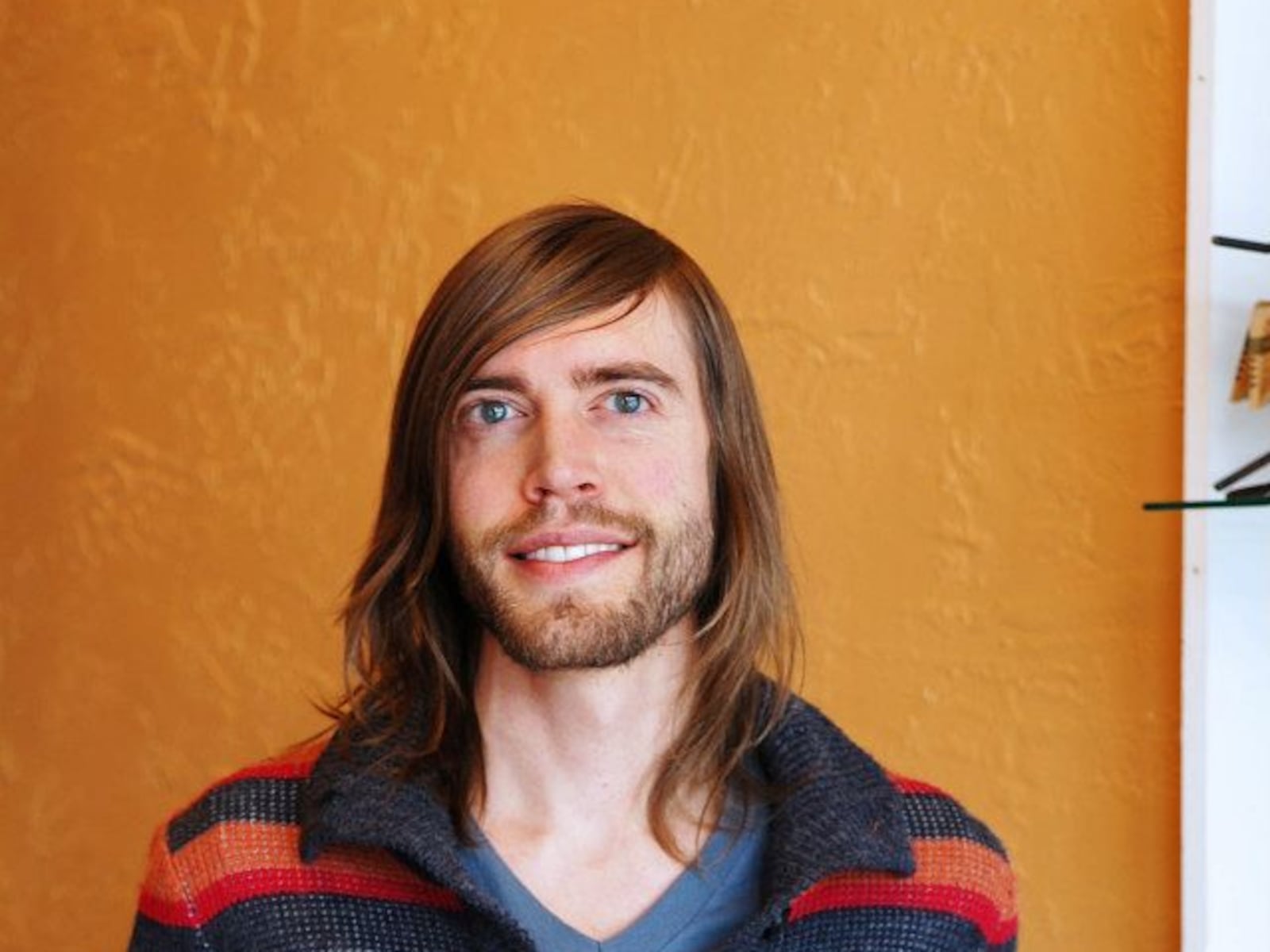As The Chocolate Conspiracy enters its 15th year in business, I’m still learning my way forward. I never fully expected to pursue this career. Instead, I was drawn to it.
I have a culinary background and have always gravitated toward healthier cuisine. Although working in the food industry wasn’t something I wanted to do at first, I soon found my way into restaurants and high-end catering.
While on a raw food retreat in Patagonia, Arizona, I found myself wanting to learn more, so I enrolled in the Institute for Integrative Nutrition in New York City and eventually became certified as a holistic health practitioner.
At that retreat, I saw raw cacao beans — chocolate in its raw state — for the first time. One of the chefs, an old German woman named Gisela, taught a workshop on how to make chocolate. Once I learned how to create my own chocolate by hand using the cacao bean, I was absolutely hooked.
From that point on, chocolate stuck with me. While in New York, I worked as a chef at a health food store and ran the deli and juice bar. Because the store didn’t cook on Sundays and the owner shut the kitchen down, he let me play in the kitchen and make chocolate one day a week. It was a lot of trial and error.
At first, I wasn’t any good, but that didn’t dissuade me from trying. I’d create chocolate bars, pack them into my backpack while still a student, and hand them out at school to gather feedback. Eventually, people started paying me. I’d sell between 150 and 300 chocolate bars each weekend for $6 a pop, returning home with nothing but cash.
It didn’t take long to realize that being smarter and going bigger could be a great business opportunity. I decided to give it a shot.
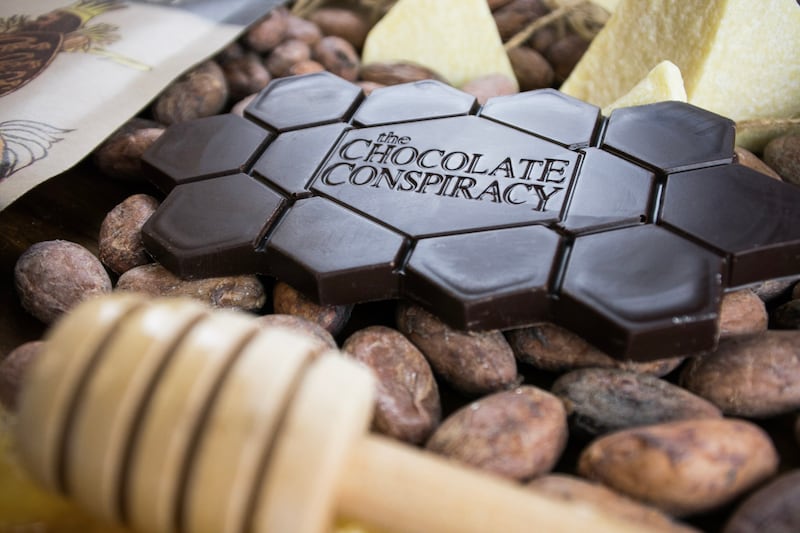
Putting down roots
After finishing my first year of nutrition school, I moved back to Utah with a solid plan to start a chocolate business.
Balancing coaching as a health practitioner and chocolate making as my two streams of income, I started trying to land accounts. It took three years of playing around in a rented Salt Lake City catering kitchen before I created a product I was satisfied with, but I got there. At the same time, I worked for the school I graduated from, coaching new students entering the program. Finally, I could earn a paycheck with chocolate money.
Health coaching stopped, and I pursued chocolate full-time. My products started getting picked up around town. Caputo’s Market & Deli was my first retailer, and bigger accounts like Harmons, Whole Foods, and Natural Grocers followed.
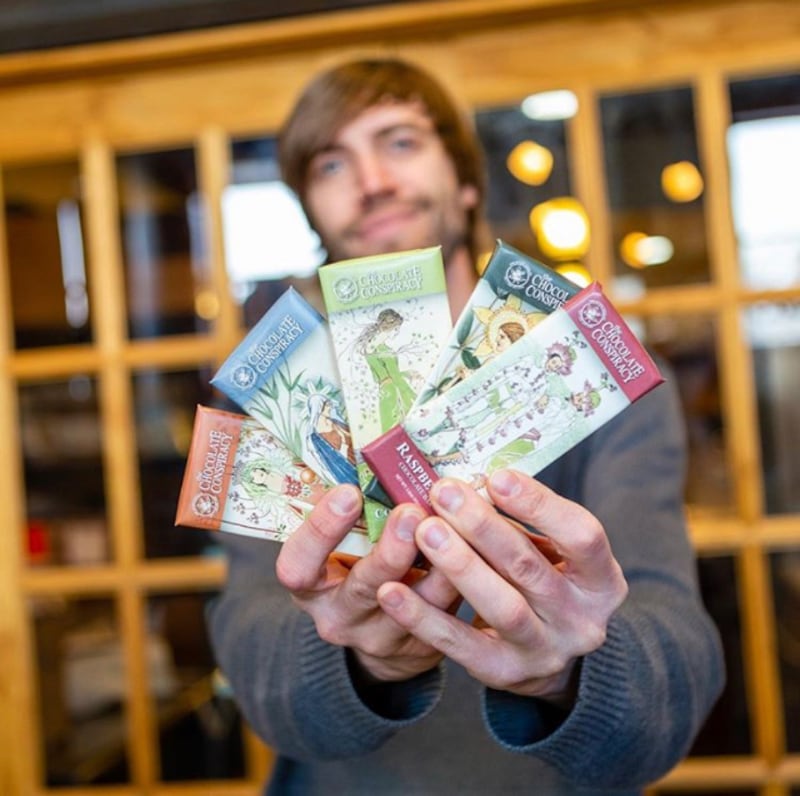
Sweet inspiration
In addition to getting my products in stores, I wanted to change people’s perceptions of chocolate. I wanted to create the healthiest chocolate possible. To that end, my products have no refined sugar or dairy and are sweetened with Utah honey. I became better at making healthy chocolate and turned that motivation into establishing a fine chocolate brand.
The more I ate chocolate, especially in its raw, natural state, the more I realized how good it made me feel. I was always able to tell when chocolate elevated my mood. When I did a diet overhaul in 2008, my intent was to cut out as many bad foods as I could and switch them to high-quality food instead. Chocolate was one of the health foods in my arsenal.
Focusing on my craft helped me name my business. Dr. Andrew Weil also helped when he spoke in one of my nutrition classes. Speakers often visited, teaching us about the peanut butter diet and raw food, for example, as well as spirituality and how to manage stress levels. Weil taught a particular exercise where we were all breathing in unison. As we did so, he wanted to give us something good to focus on. More specifically, he wanted to put a new spin on the word conspiracy.
As I breathed in and out along with the others, all I could think about was chocolate. I was sitting there and participating in the group meditation, but I could not stop thinking about getting back into the kitchen and working on new recipes. This desire was something I just couldn’t turn off.
Just like that, this idea of a chocolate conspiracy was born, revolutionizing my approach. I knew I wanted to make a healthy spin on it. I knew I would conspire to make healthy chocolate for consumers.
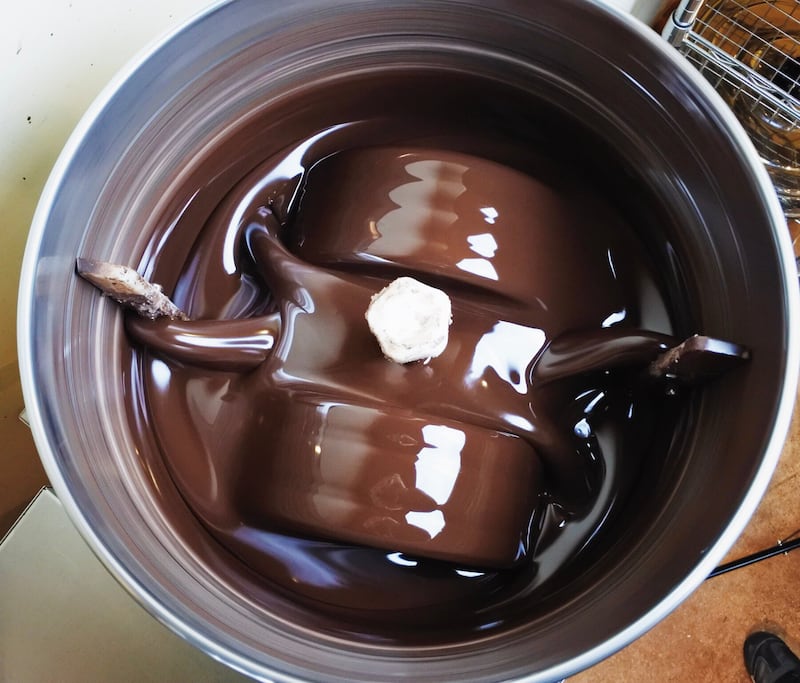
Back to the (bean) basics
A decade ago, there was no rule book and no machinery for small-scale chocolate makers. You had to be a big business immediately and buy very small or huge machines. There was no middle ground. I purchased seven small machines and ran them simultaneously to make the needed amounts.
When the leadership at Caputo’s Market & Deli first tasted my chocolate, they promptly told me it was no good. At the time, many people were telling me the opposite, but when one of the biggest chocolate retailers in Salt Lake City tells you otherwise, you make changes.
I still tweak recipes. The company grew steadily for many years. When COVID-19 hit, though, we were forced to rethink everything. At that time, I had six employees and two partners acting as investors. I was doing farmers' markets, events and trade shows. I was swamped and spread thin.
But during the lockdown, my company comprised just my wife and me. We’d go to the kitchen and make chocolate, then come home. There were no markets, events or shops open to the public. After a year of doing that, I realized I liked that pace far more.
I shut down my retail shop to focus on my best chocolate products and get back to the basics. I no longer sell hot chocolate, tea or coffee. All products are on a shelf and available to grab and go.
I also repurchased ownership from my partners, making The Chocolate Conspiracy a family-owned, family-run company again. My parents initially helped start the business with what they could, and they still help because they love what I am doing.
While I still struggle like any other small business, I don’t have employees or the overhead I used to have. And because everything’s automated, and it has been for years, accounting and inventory management are wholly taken care of. I can focus on what I most want to do: make and sell chocolate.
The Chocolate Conspiracy is a passion project that I turned into a business. However, I’m still a starving chocolate artist. I was once a painter. I am a musician. I love woodworking and crafting. But chocolate is my art; it’s what I most love to do.
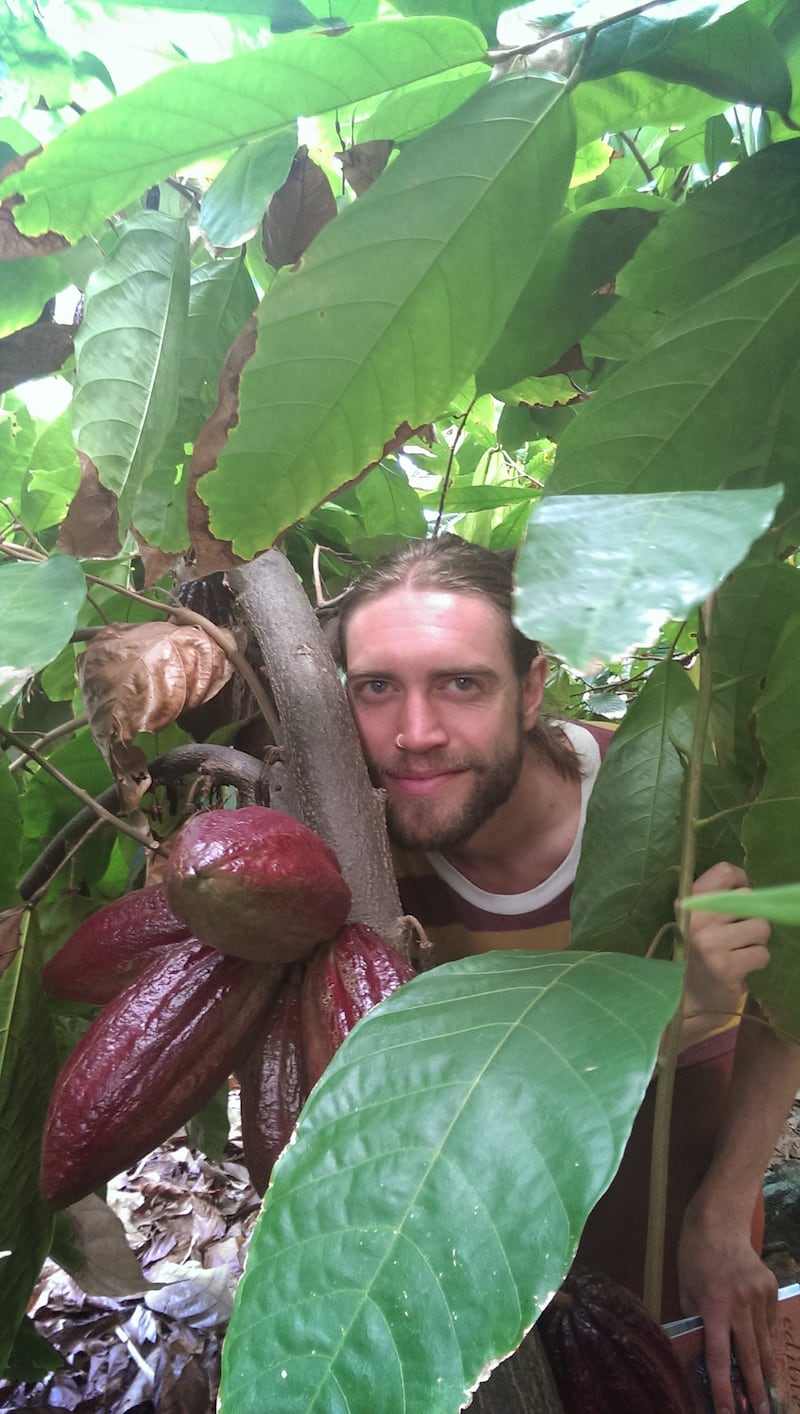
Spicing up the chocolate playbook
Part of being an artist is finding the medium you feel most comfortable using. For me, that meant finding the right bean to use. I found one I liked from a farm in Peru, and all of my products are made using it. This farm is certified organic, kosher and fair trade. The 150 different families on the farm formed a co-op where they grow and harvest the cacao. They take it to a central processing facility, where they ferment and dry it. After the beans are packaged, they’re vacuum sealed, and these 33-pound bricks of condensed cacao nibs are shipped to me.
I pay more for a higher-quality, cleaner bean. Other chocolate producers buy cacao in big burlap bags. These are usually dirty and may contain rocks, sticks and other foreign objects.
Many purist chocolate makers don’t include additional ingredients beyond cacao and sugar. I like to add ingredients like cayenne, cinnamon, vanilla and black pepper to my chocolate. In fact, many purists still use old-fashioned methods. Their goal is to experiment with the bean and see what nuances they can extract from it, depending on how long the beans are roasted.
Originally, roasting was done to remove the skin of the bean, but machinery has improved. It’s easier to winnow raw beans now, and roasting isn’t necessary. Still, many continue to roast because of the deep flavor it allows for. I choose not to roast to maintain as much nutritional value as possible.
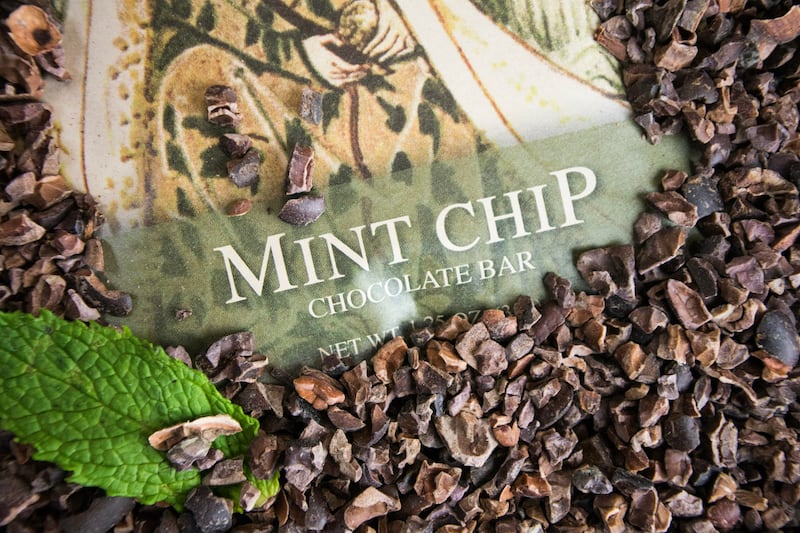
Small batch, big dreams
When I started, I would sell at five farmers' markets a week. Monday was my only day off. I spent two days a week making chocolate and four days a week selling it, adding up to 90-120 hour workweeks.
Experience has taught me to simplify. COVID was a hard reset that made me reconsider how I was working and what I was putting my energy toward. It helped me slow down.
One thought I keep in mind is that, if I mess it up, it’s just chocolate. I’m by no means trying to save the world. That perspective allows me to let go of the pressures I put on myself as a business owner.
Some prominent chocolate makers have warehouses and manage 40 employees. They’ve turned into mechanics, always fixing broken-down machines. They’re now managing the production of chocolate, not making the chocolate, which is what I most enjoy. My goal is to stay small and flourish as a mom-and-pop chocolate shop.
As a company grows, it can lose quality, and I never want to see that happen. I want my product to feel like the high-end craft I know it is, akin to buying a beautiful piece of art someone made with their hands. That’s where my passion lies.
